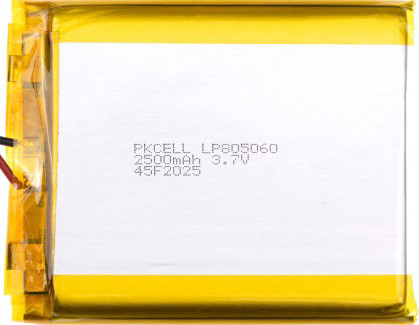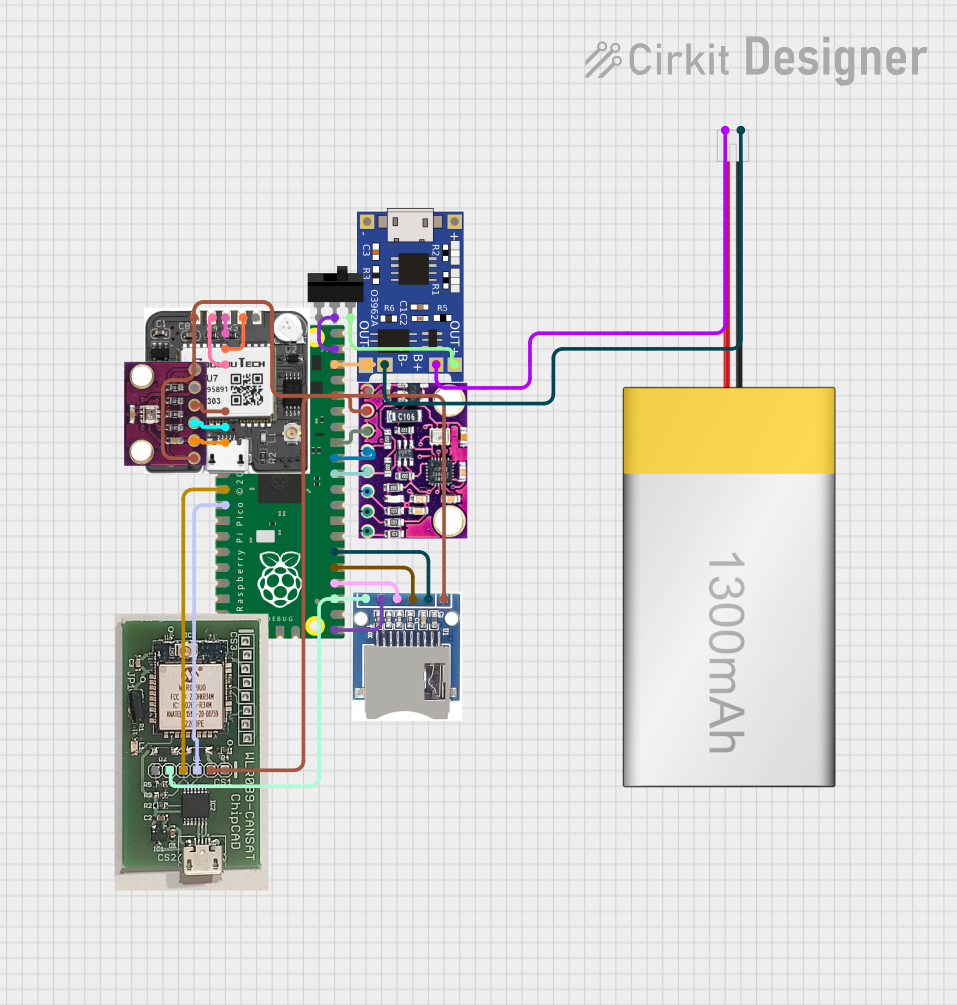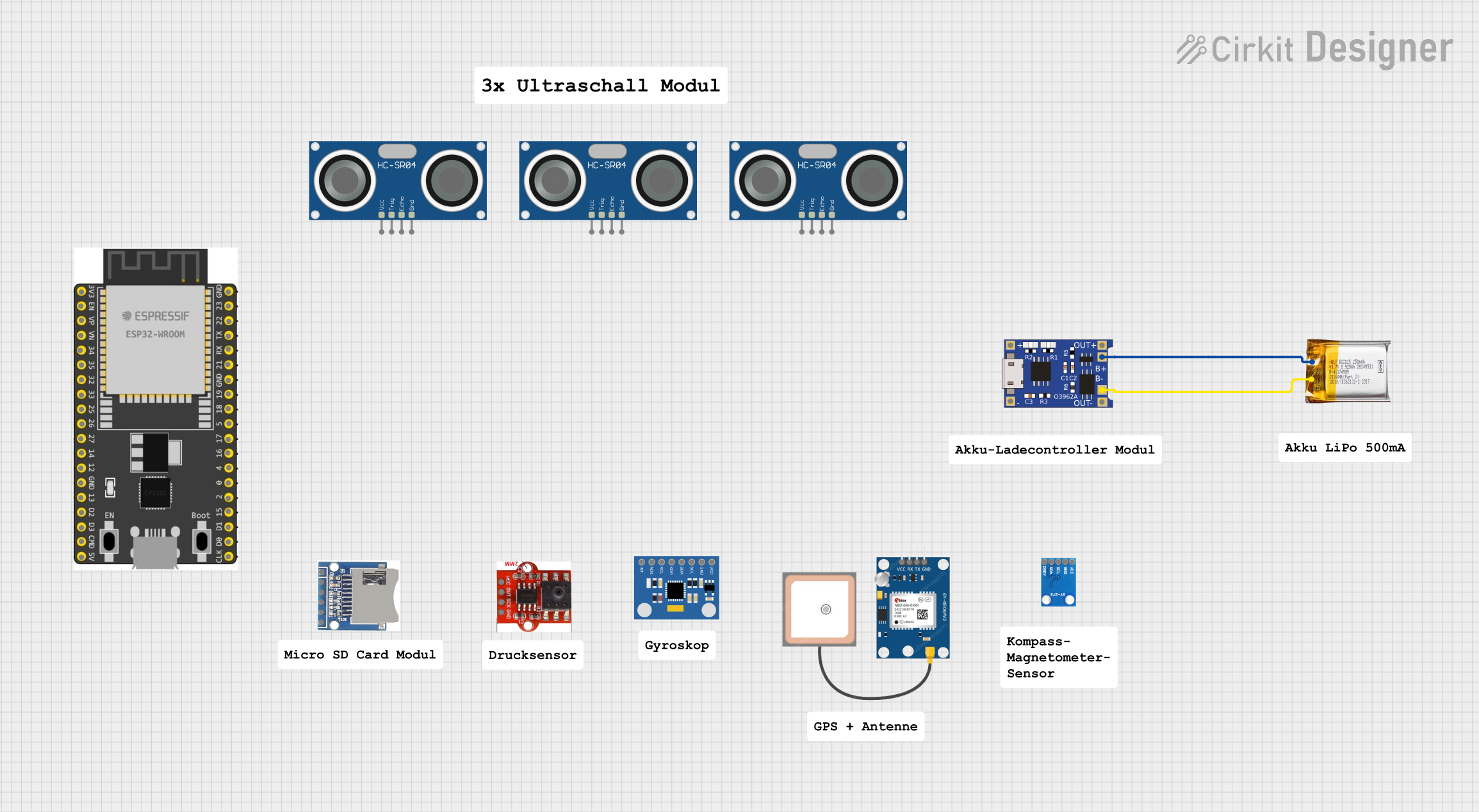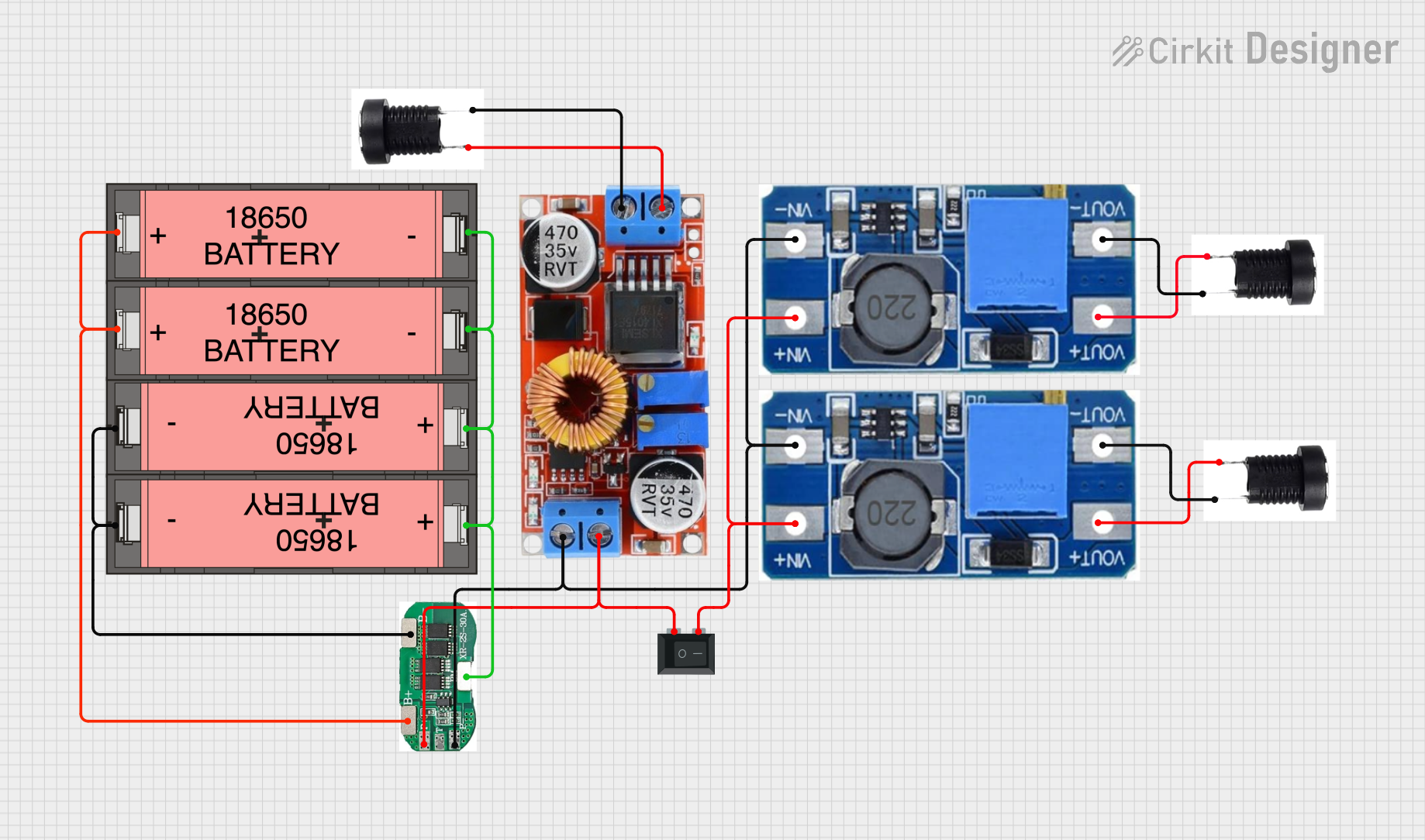
How to Use LiPo 2500mAh: Examples, Pinouts, and Specs

 Design with LiPo 2500mAh in Cirkit Designer
Design with LiPo 2500mAh in Cirkit DesignerIntroduction
The PKCELL LiPo 2500mAh is a lightweight and high-capacity lithium polymer battery designed for applications requiring reliable and efficient power delivery. With a capacity of 2500mAh, this battery is ideal for powering RC vehicles, drones, portable electronics, and other devices that demand high energy density in a compact form factor. Its rechargeable nature and stable performance make it a popular choice for hobbyists and professionals alike.
Explore Projects Built with LiPo 2500mAh

 Open Project in Cirkit Designer
Open Project in Cirkit Designer
 Open Project in Cirkit Designer
Open Project in Cirkit Designer
 Open Project in Cirkit Designer
Open Project in Cirkit Designer
 Open Project in Cirkit Designer
Open Project in Cirkit DesignerExplore Projects Built with LiPo 2500mAh

 Open Project in Cirkit Designer
Open Project in Cirkit Designer
 Open Project in Cirkit Designer
Open Project in Cirkit Designer
 Open Project in Cirkit Designer
Open Project in Cirkit Designer
 Open Project in Cirkit Designer
Open Project in Cirkit DesignerCommon Applications
- RC vehicles (cars, boats, planes)
- Drones and quadcopters
- Portable electronic devices (e.g., handheld gaming consoles, cameras)
- DIY electronics projects
- Robotics and IoT devices
Technical Specifications
The following table outlines the key technical details of the PKCELL LiPo 2500mAh battery:
| Parameter | Specification |
|---|---|
| Nominal Voltage | 3.7V |
| Capacity | 2500mAh |
| Chemistry | Lithium Polymer (LiPo) |
| Discharge Rate (C-Rating) | 1C (continuous), 2C (maximum burst) |
| Charging Voltage | 4.2V (maximum) |
| Discharge Cutoff Voltage | 3.0V (minimum) |
| Dimensions | 65mm x 35mm x 8mm (approx.) |
| Weight | ~45g |
| Connector Type | JST or custom (varies by model) |
| Operating Temperature | -20°C to 60°C |
Pin Configuration and Descriptions
The PKCELL LiPo 2500mAh battery typically comes with a two-pin JST connector for power delivery and a separate balance connector for charging. Below is a description of the pins:
| Pin | Description |
|---|---|
| Red | Positive terminal (+) |
| Black | Negative terminal (-) |
| Balance Connector | Used for safe charging and balancing |
Note: Always verify the connector type and pinout before connecting the battery to a circuit or charger.
Usage Instructions
How to Use the LiPo 2500mAh in a Circuit
Connect the Battery:
- Ensure the device or circuit is compatible with the battery's voltage (3.7V nominal).
- Use the JST connector to connect the battery to the power input of your device.
- If using a balance charger, connect the balance connector to the charger for safe charging.
Charging the Battery:
- Use a LiPo-compatible charger with a maximum charging voltage of 4.2V.
- Set the charging current to 1C (2.5A) for optimal charging speed and safety.
- Monitor the charging process to prevent overcharging or overheating.
Discharging the Battery:
- Avoid discharging the battery below 3.0V to prevent damage.
- Use a battery management system (BMS) or low-voltage alarm to monitor the voltage during use.
Mounting and Handling:
- Secure the battery in your device using a holder or adhesive to prevent movement.
- Avoid puncturing, bending, or exposing the battery to water or extreme temperatures.
Important Considerations and Best Practices
- Safety First: Always handle LiPo batteries with care to avoid short circuits, overheating, or fire hazards.
- Storage: Store the battery at a voltage of 3.7V to 3.85V per cell in a cool, dry place.
- Balancing: Regularly balance the cells during charging to maintain performance and longevity.
- Disposal: Dispose of damaged or old batteries at a certified recycling facility.
Example: Using the LiPo 2500mAh with an Arduino UNO
To power an Arduino UNO with the LiPo 2500mAh battery, you can use a DC-DC step-up converter to boost the 3.7V to 5V. Below is an example circuit and code:
Circuit Setup
- Connect the LiPo battery to the input of the DC-DC step-up converter.
- Set the output of the converter to 5V.
- Connect the output of the converter to the Arduino UNO's VIN and GND pins.
Arduino Code Example
// Example code to blink an LED using Arduino UNO powered by a LiPo battery
// Ensure the DC-DC converter is set to output 5V for the Arduino
const int ledPin = 13; // Built-in LED pin on Arduino UNO
void setup() {
pinMode(ledPin, OUTPUT); // Set the LED pin as an output
}
void loop() {
digitalWrite(ledPin, HIGH); // Turn the LED on
delay(1000); // Wait for 1 second
digitalWrite(ledPin, LOW); // Turn the LED off
delay(1000); // Wait for 1 second
}
Warning: Ensure the step-up converter is properly configured to avoid overvoltage damage to the Arduino.
Troubleshooting and FAQs
Common Issues and Solutions
Battery Not Charging:
- Cause: Faulty charger or incorrect charging settings.
- Solution: Verify the charger is LiPo-compatible and set to 4.2V with a current of 1C.
Battery Swelling or Overheating:
- Cause: Overcharging, over-discharging, or physical damage.
- Solution: Stop using the battery immediately and dispose of it safely.
Device Not Powering On:
- Cause: Low battery voltage or incorrect connection.
- Solution: Check the battery voltage and ensure proper polarity of the connections.
Short Battery Life:
- Cause: Frequent deep discharges or improper storage.
- Solution: Avoid discharging below 3.0V and store the battery at 3.7V to 3.85V.
FAQs
Q: Can I use this battery for a 5V device?
- A: Yes, but you will need a DC-DC step-up converter to boost the voltage to 5V.
Q: How long does it take to charge the battery?
- A: At 1C (2.5A), it takes approximately 1 hour to fully charge the battery.
Q: Is it safe to leave the battery connected to a device?
- A: Only if the device has a low-voltage cutoff to prevent over-discharging.
Q: Can I use this battery in cold weather?
- A: Yes, but performance may decrease below -10°C. Avoid charging below 0°C.
By following these guidelines, you can safely and effectively use the PKCELL LiPo 2500mAh battery in your projects.